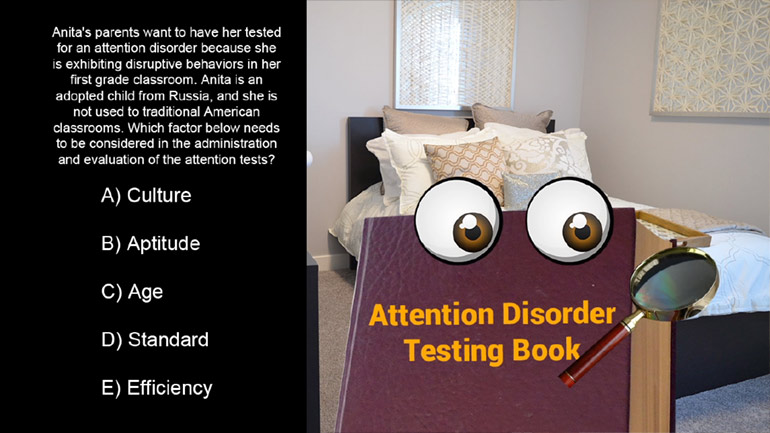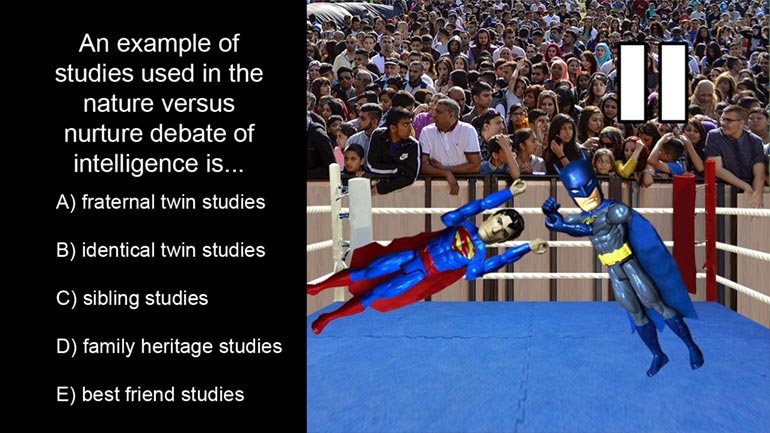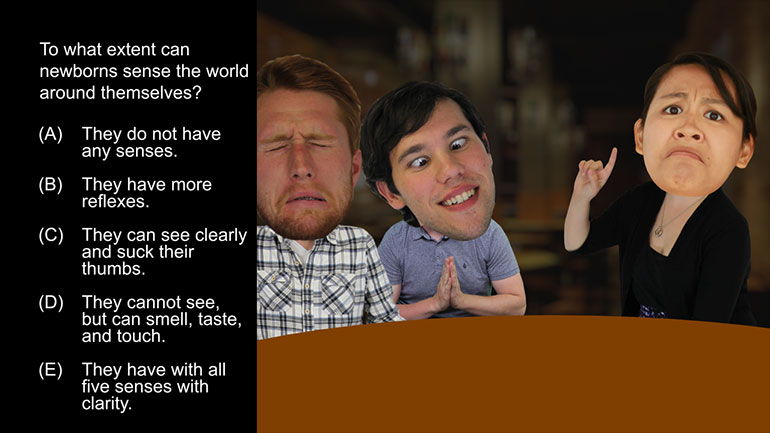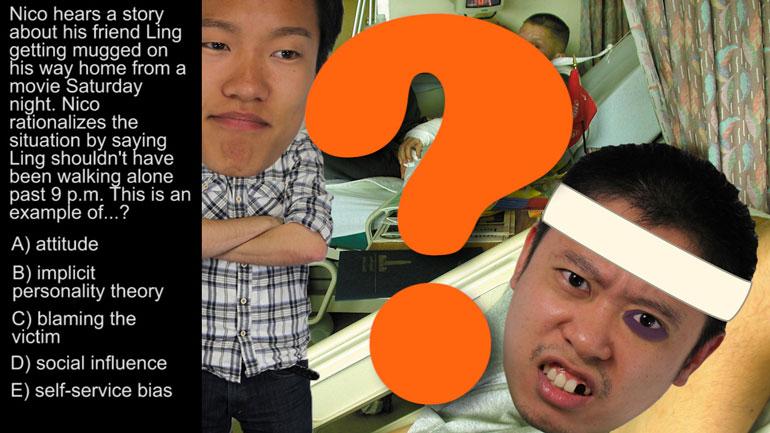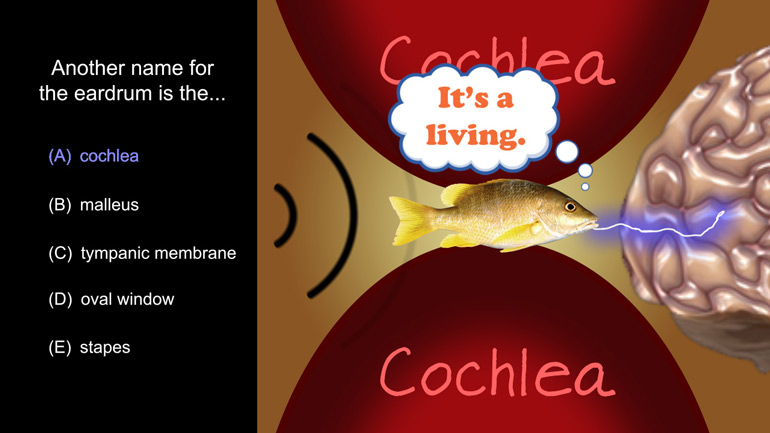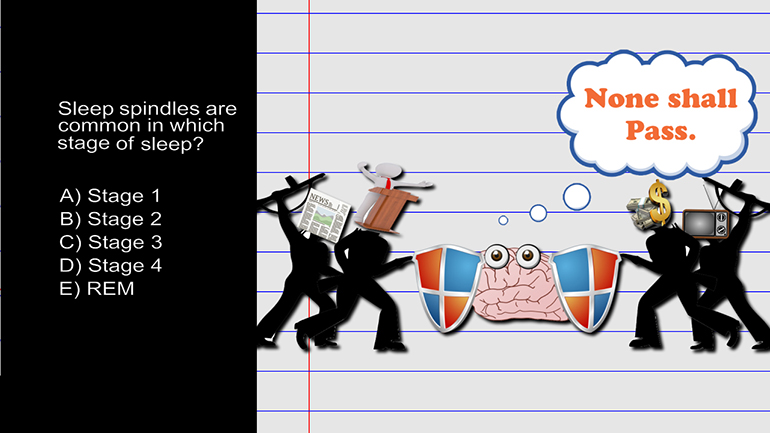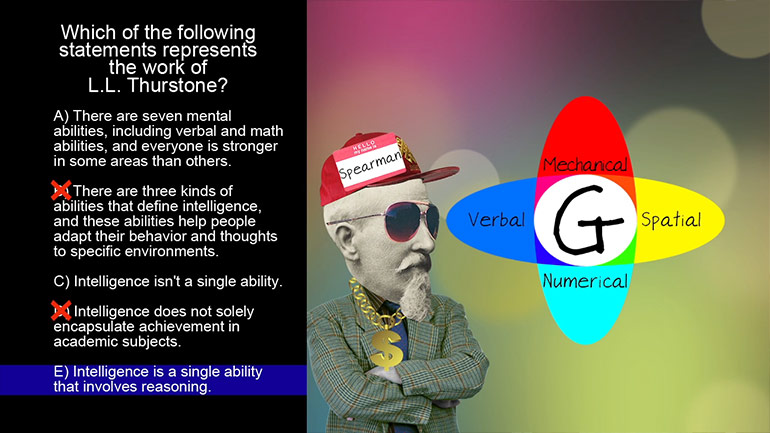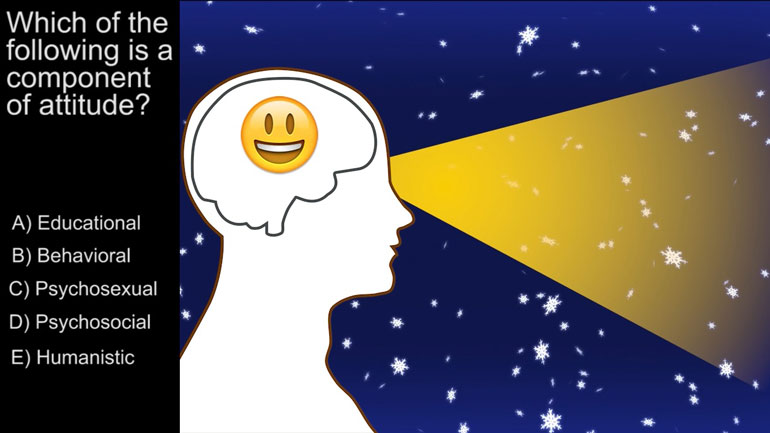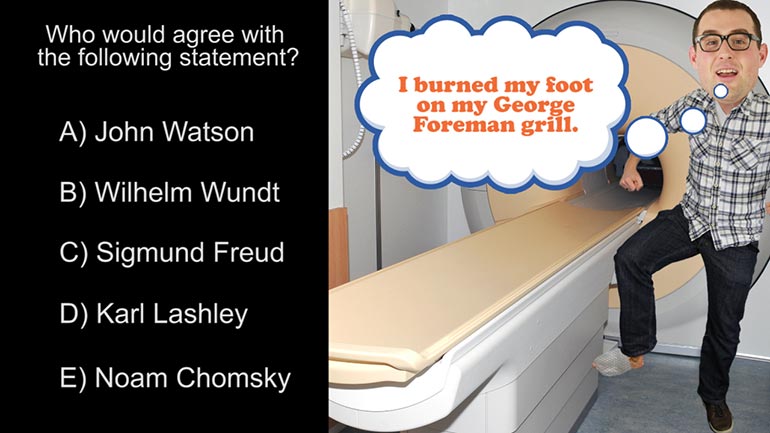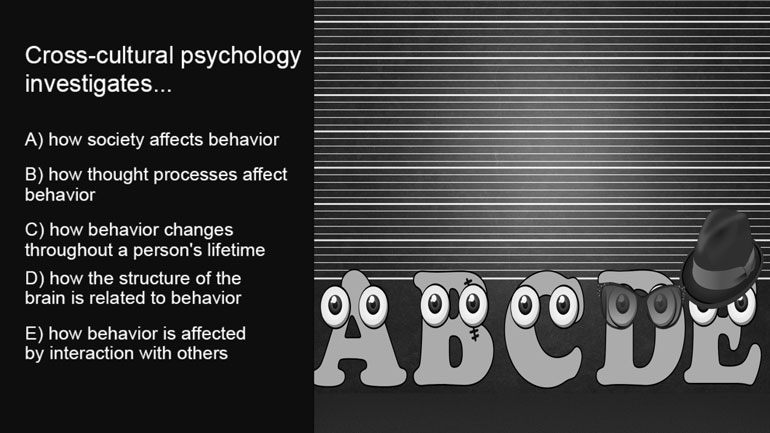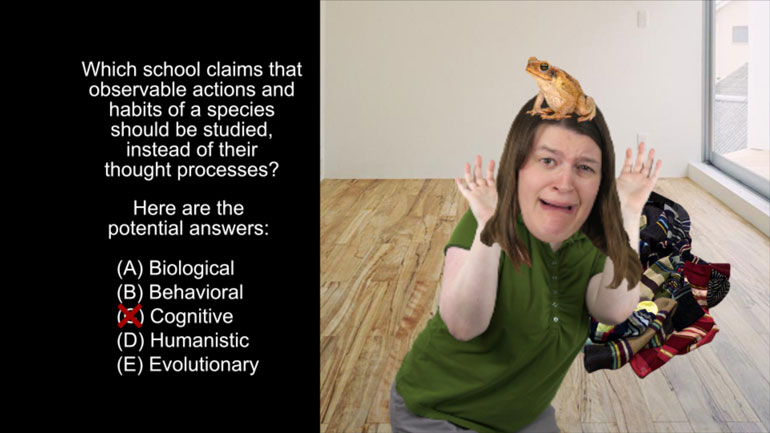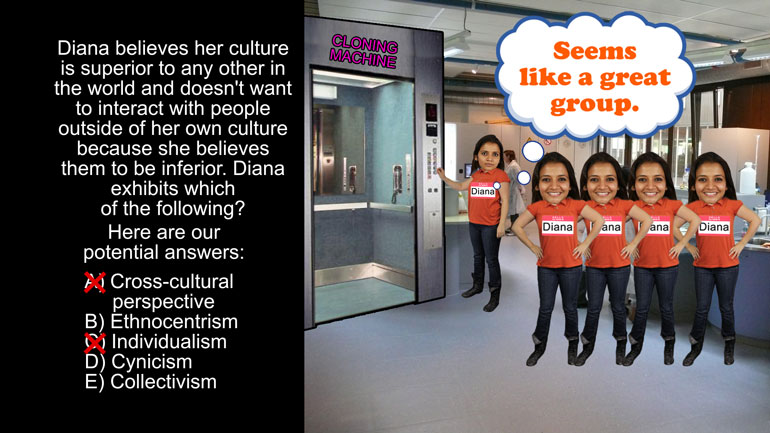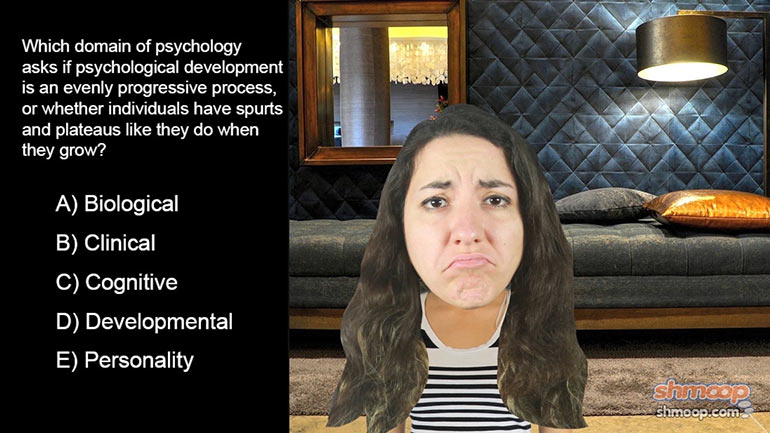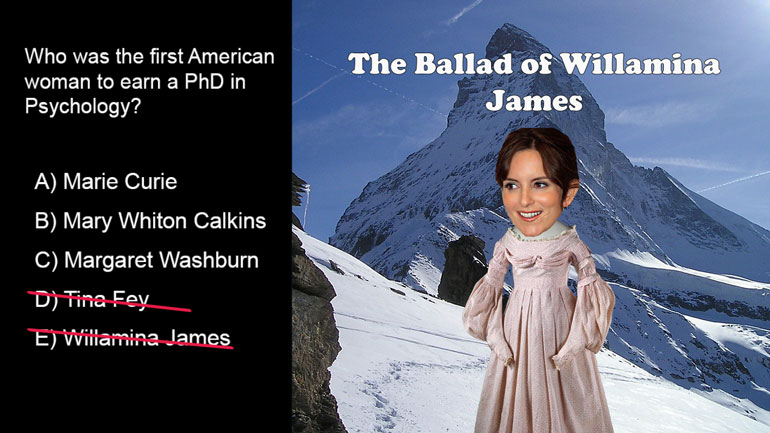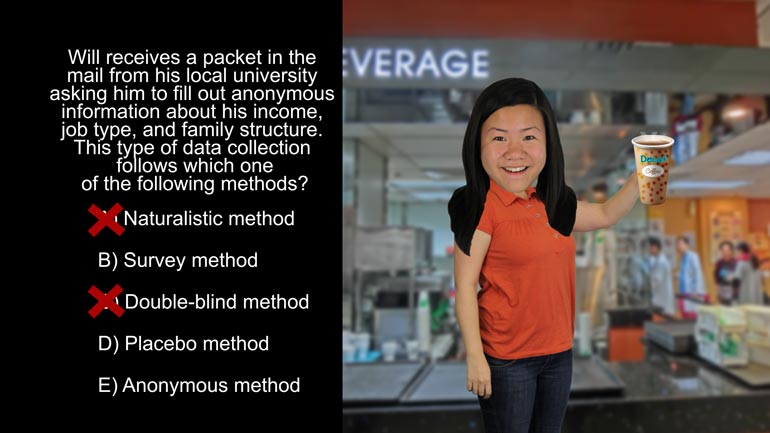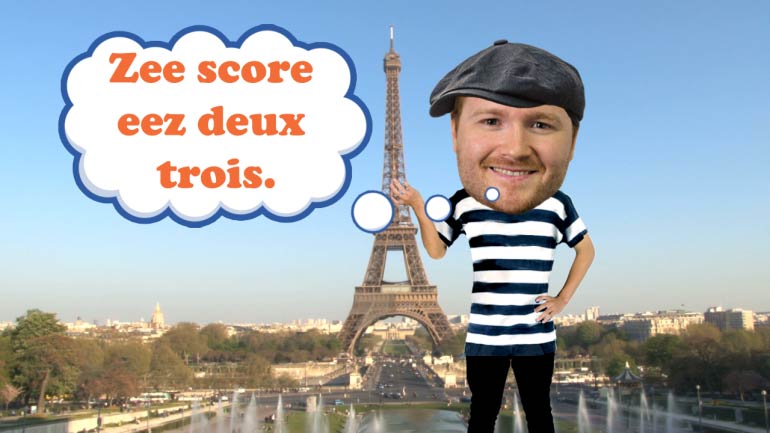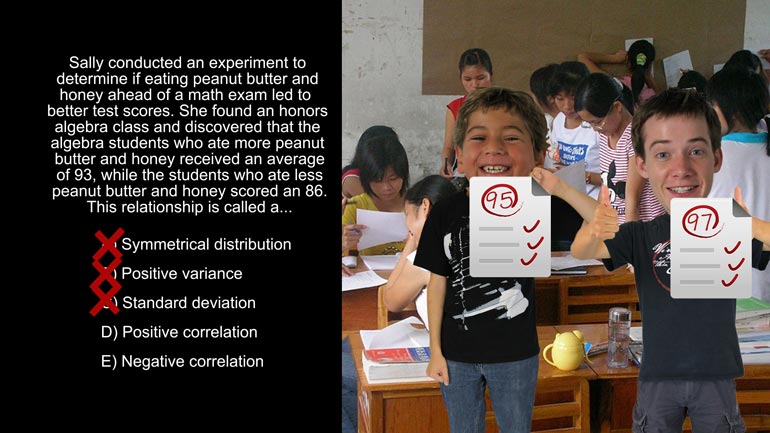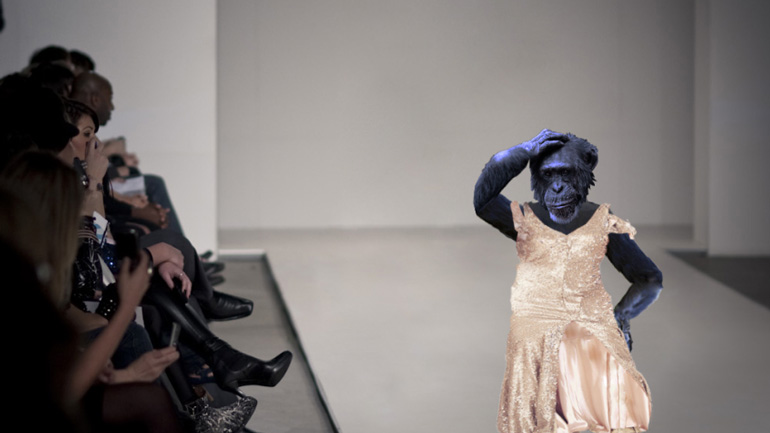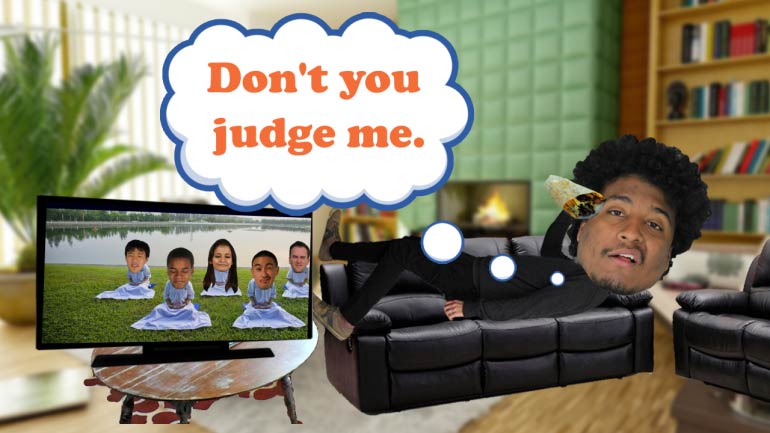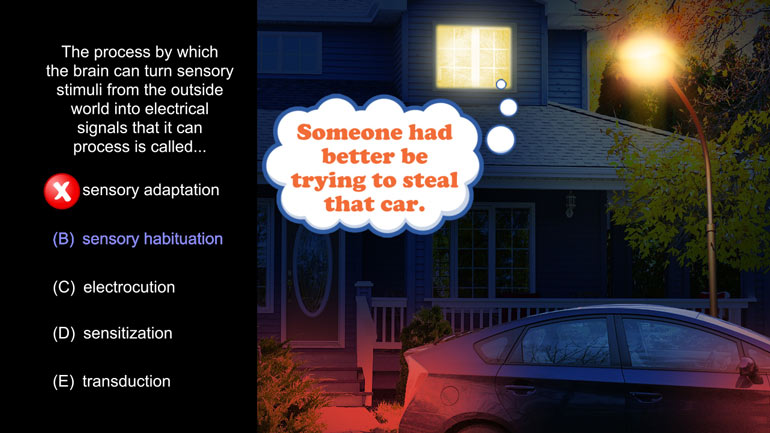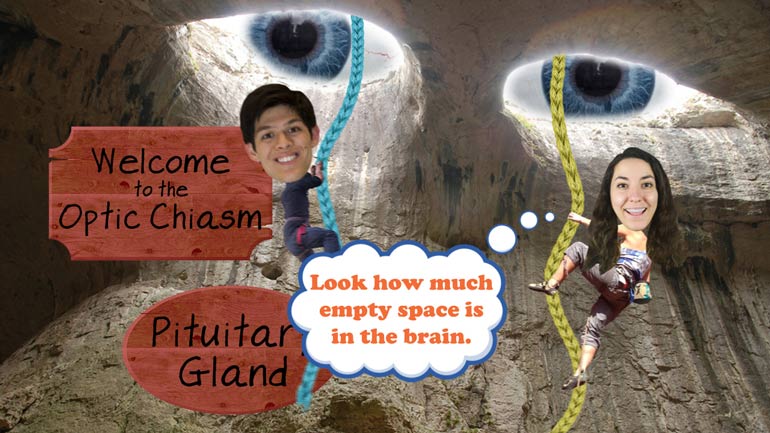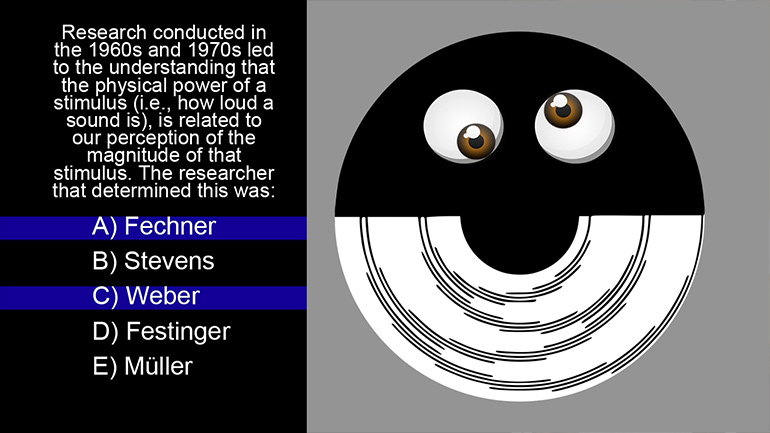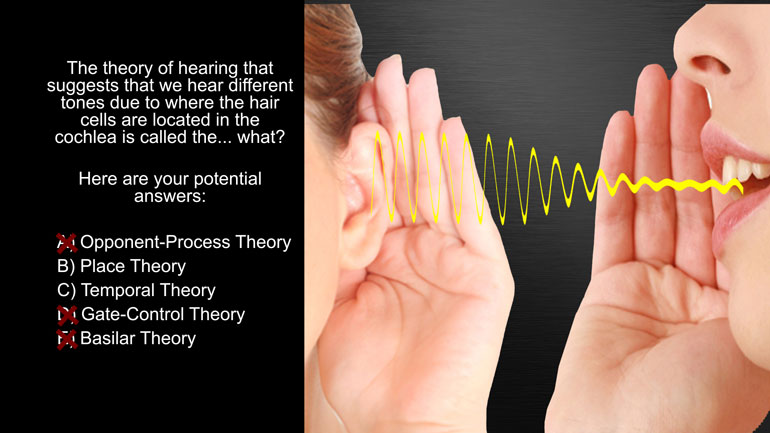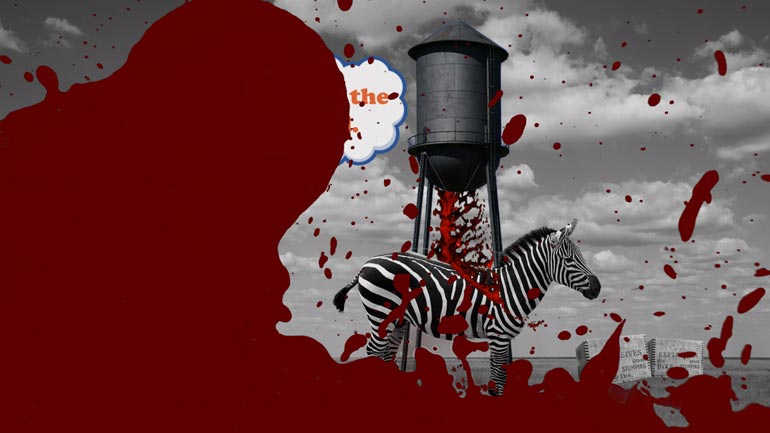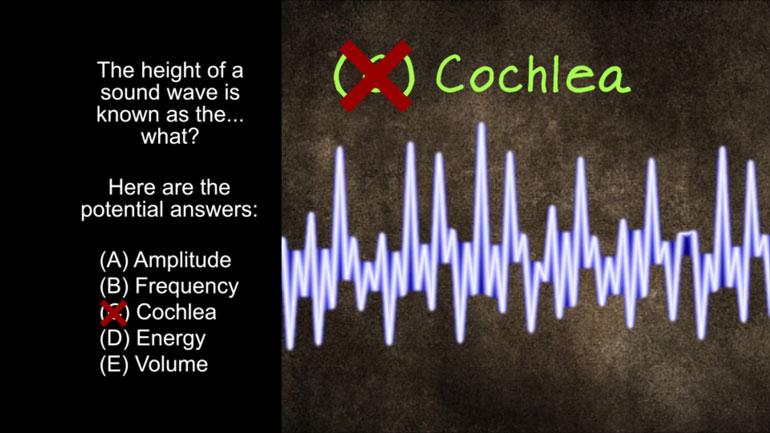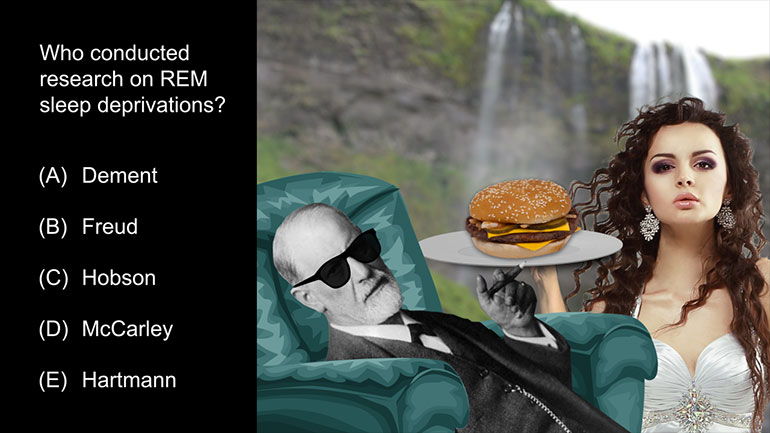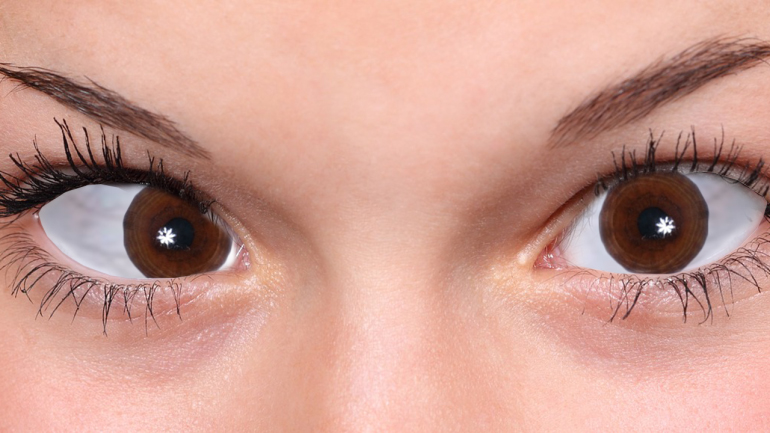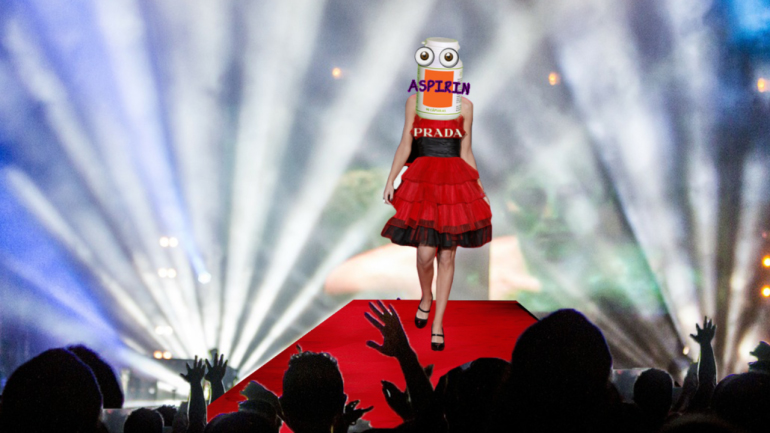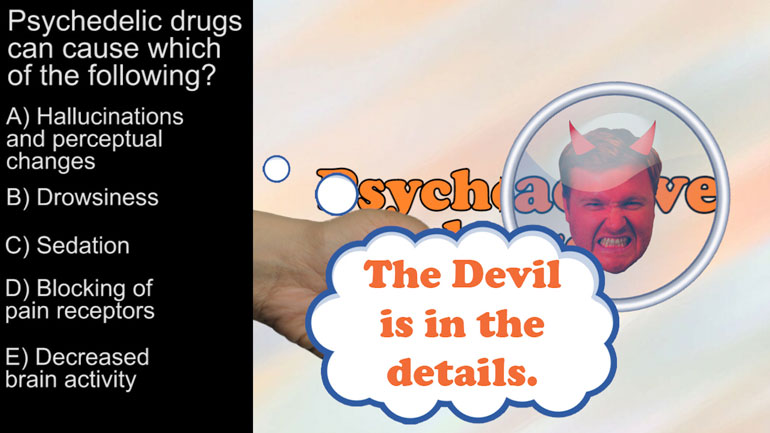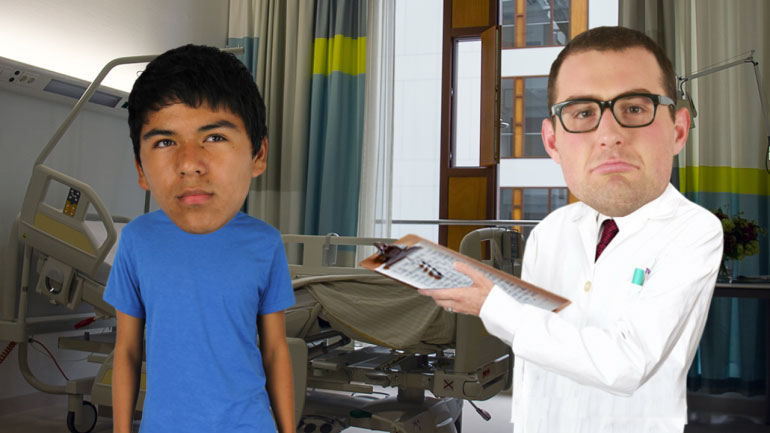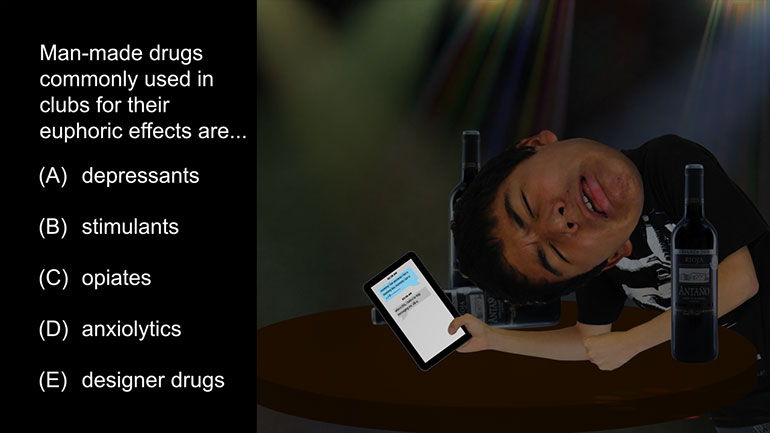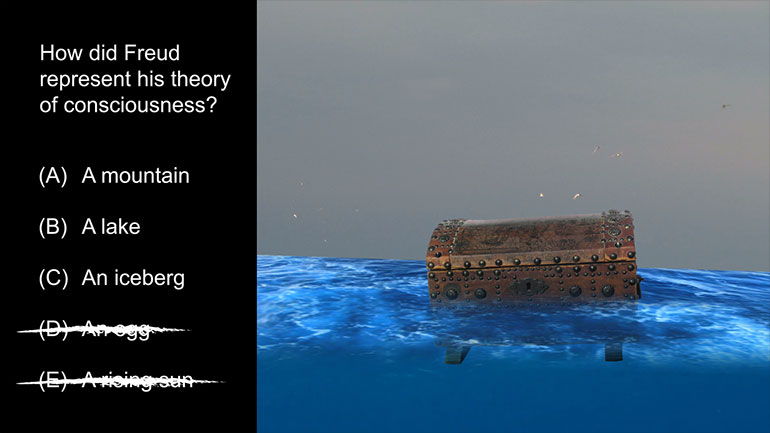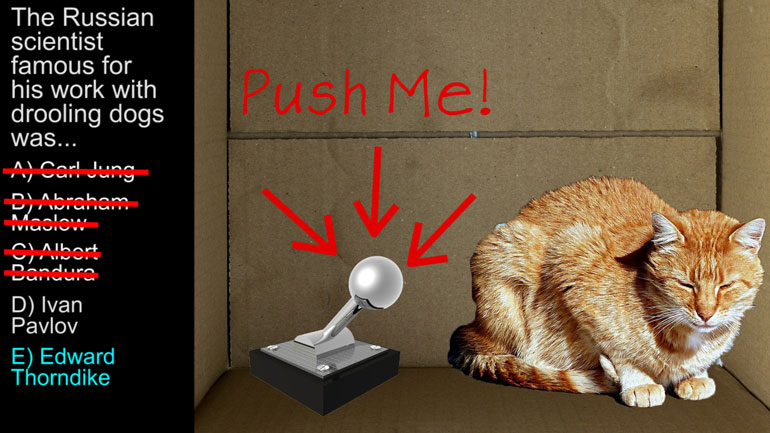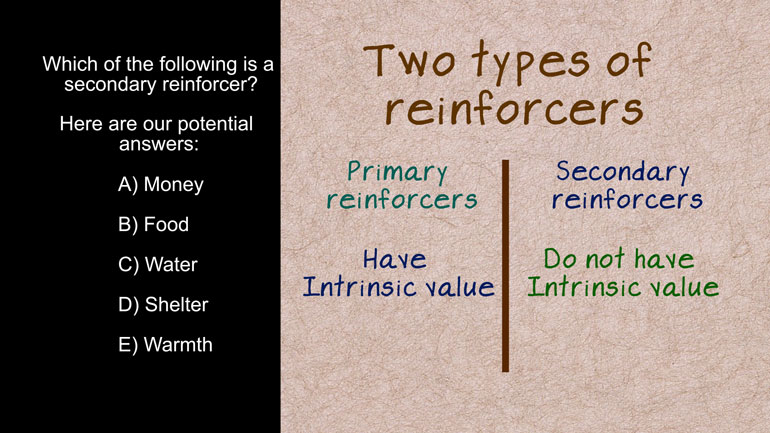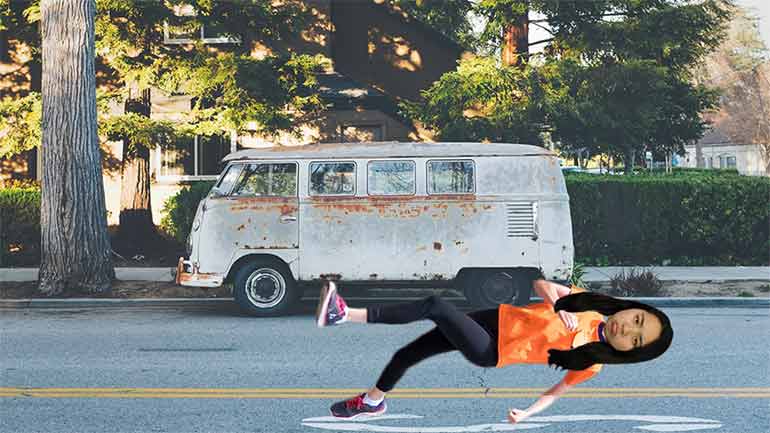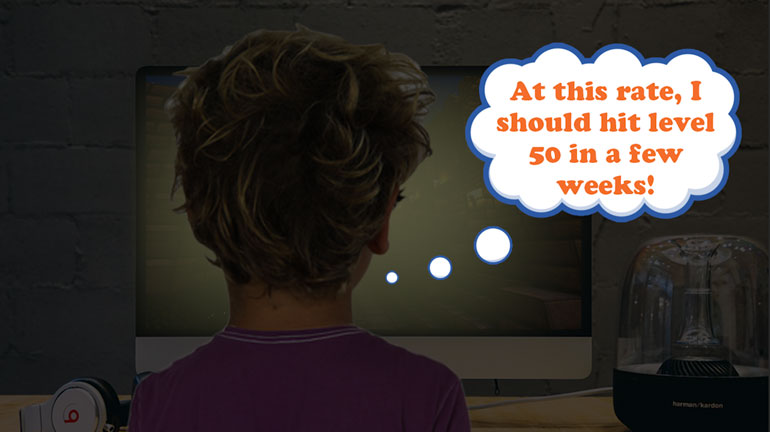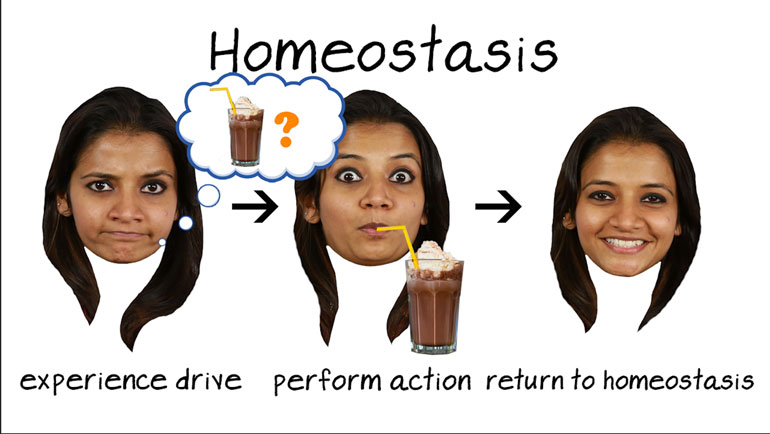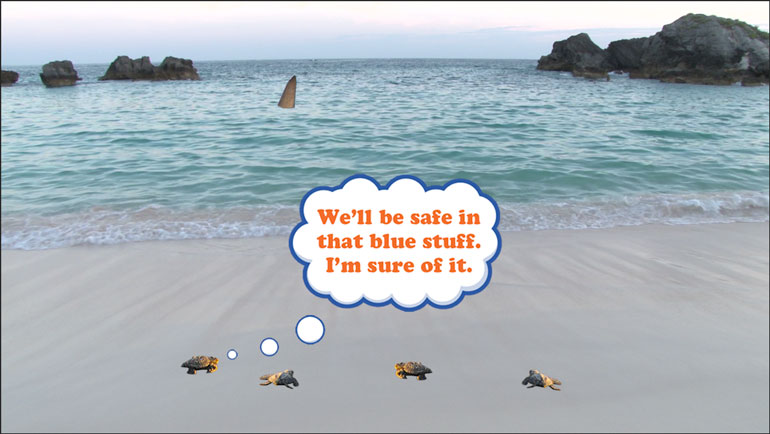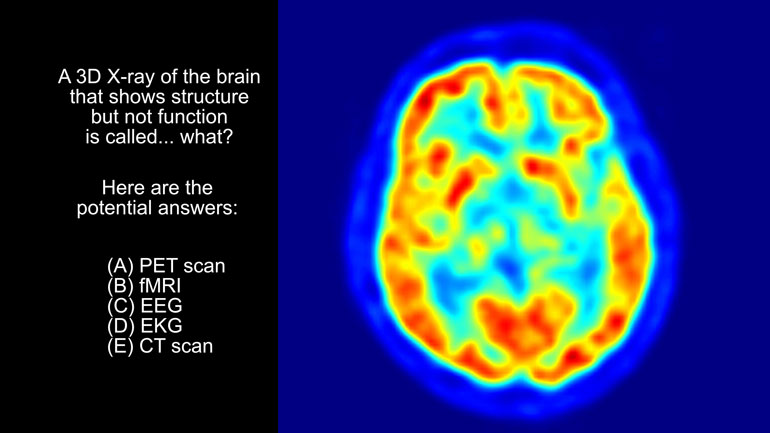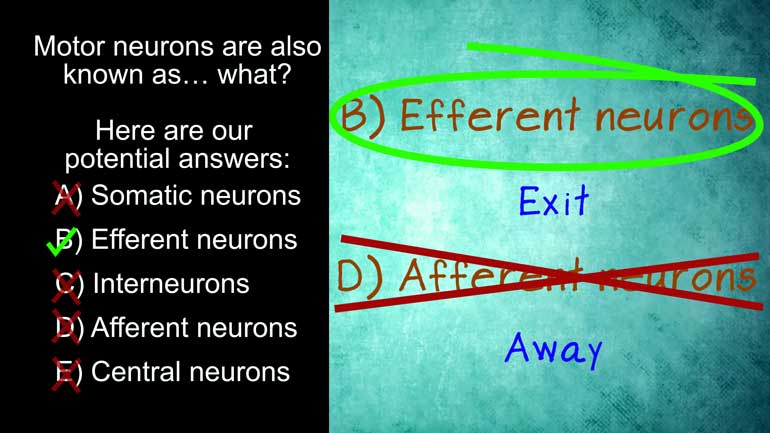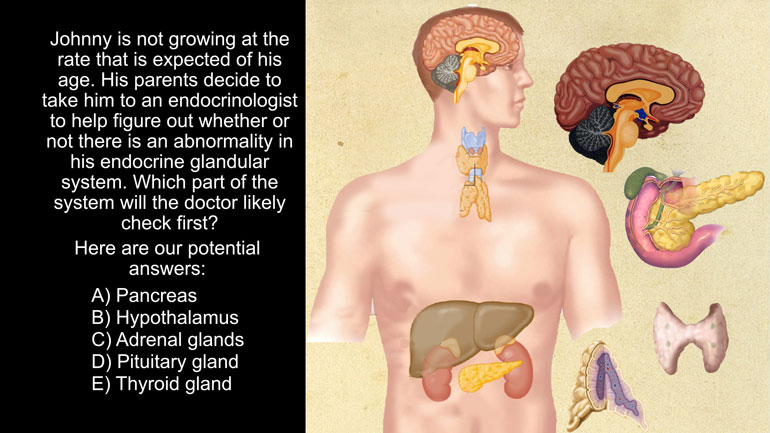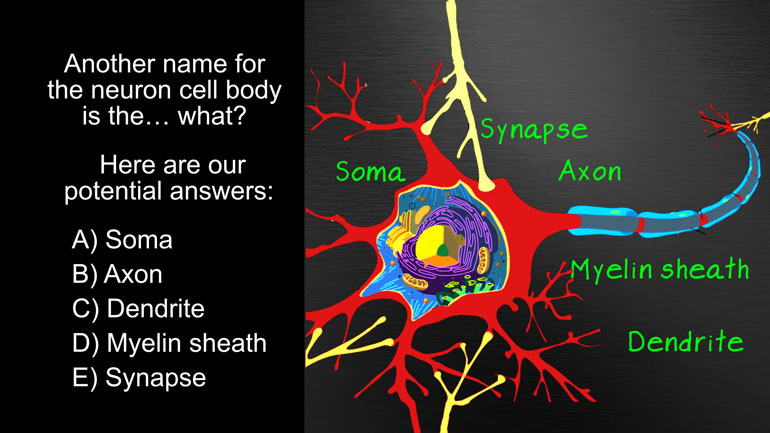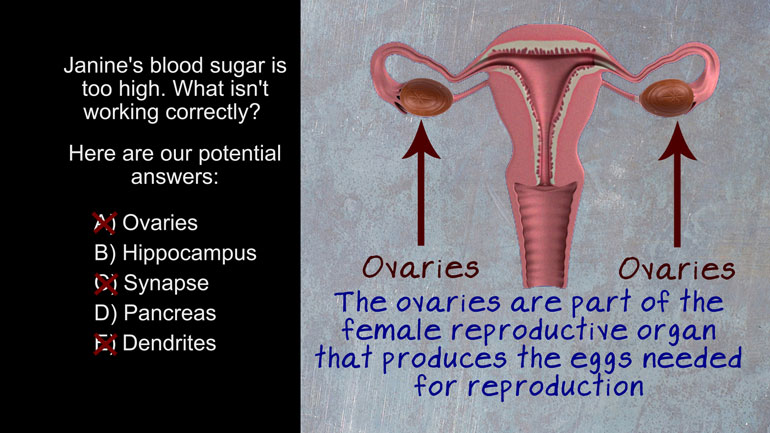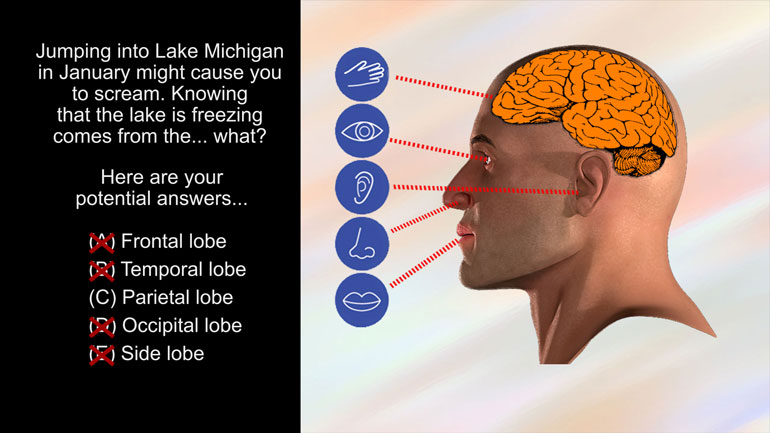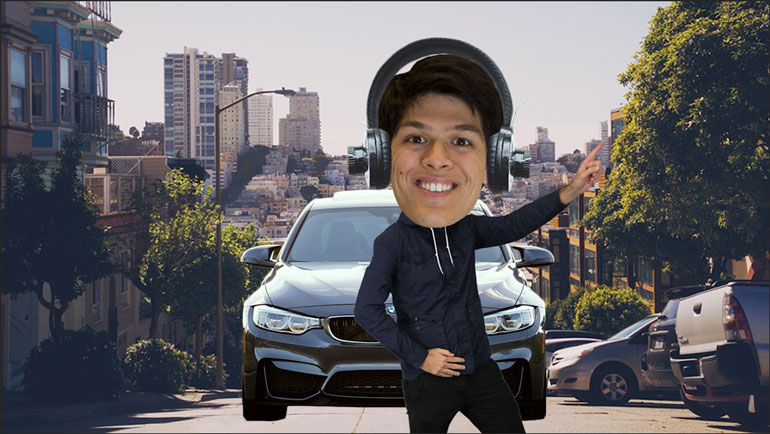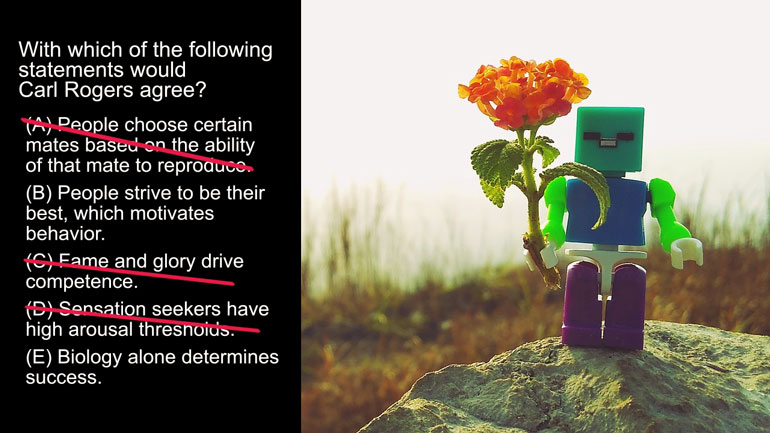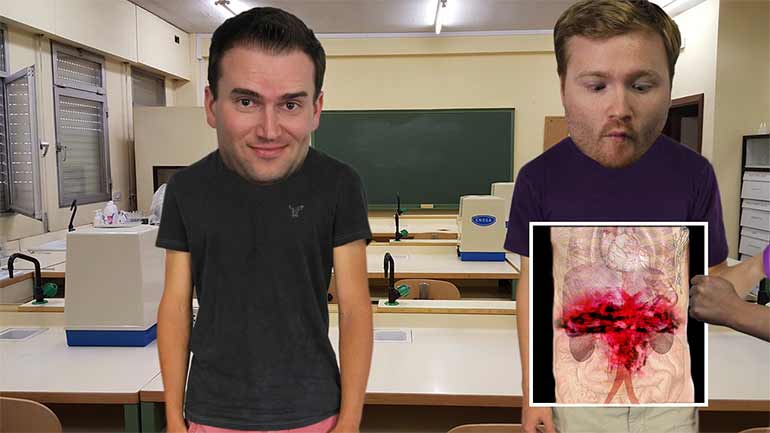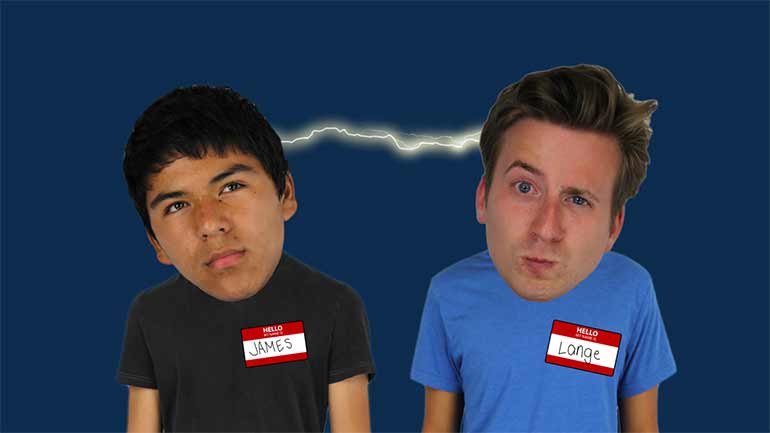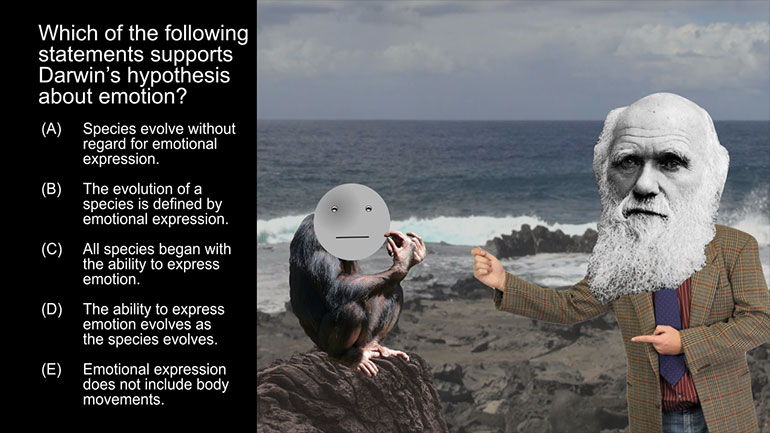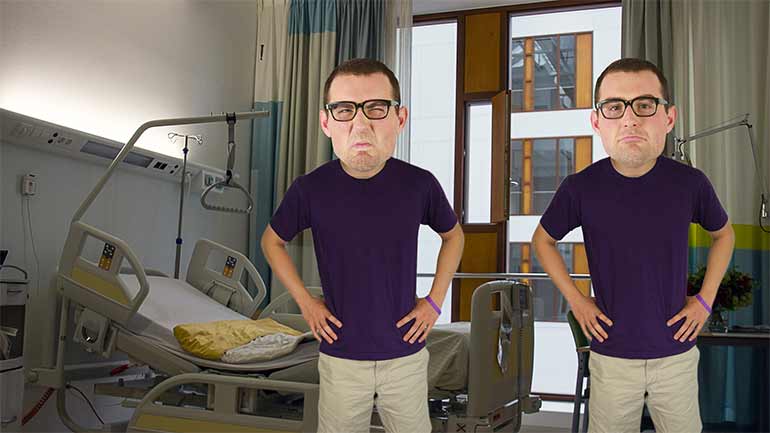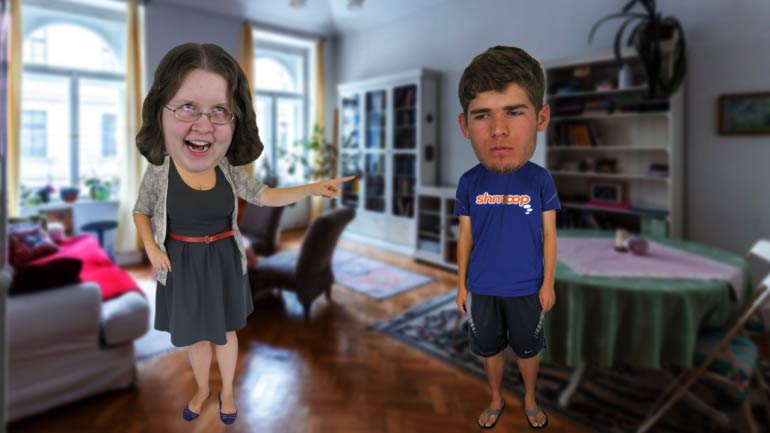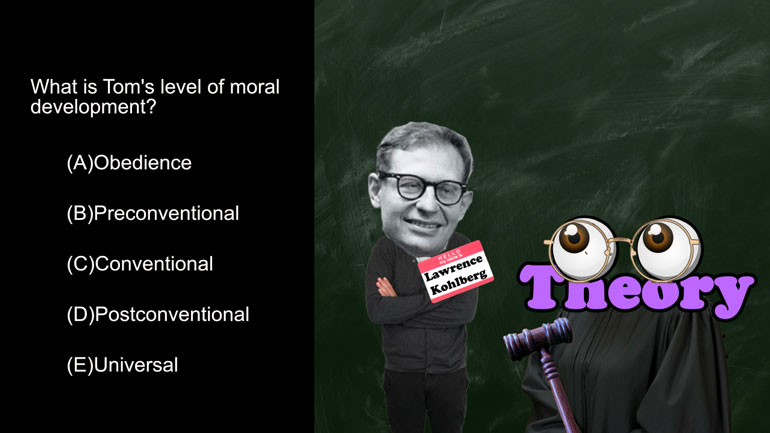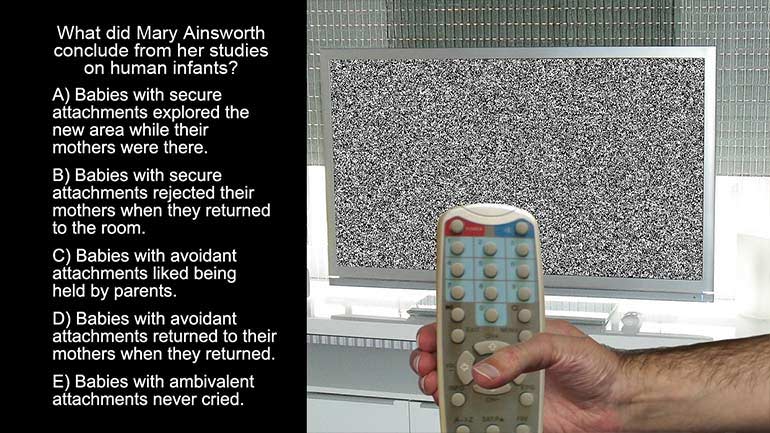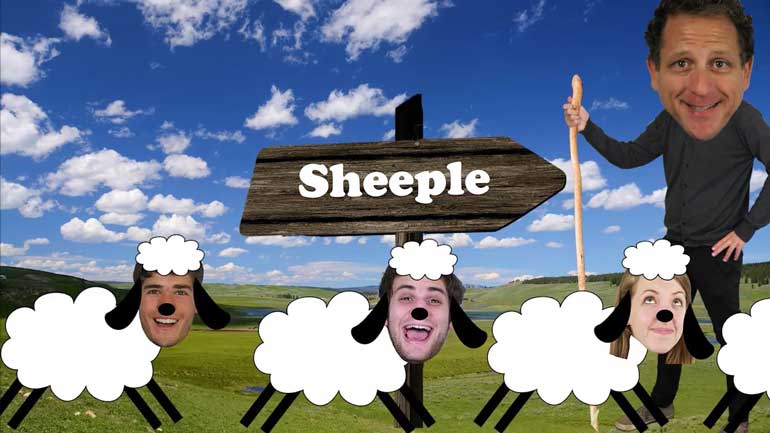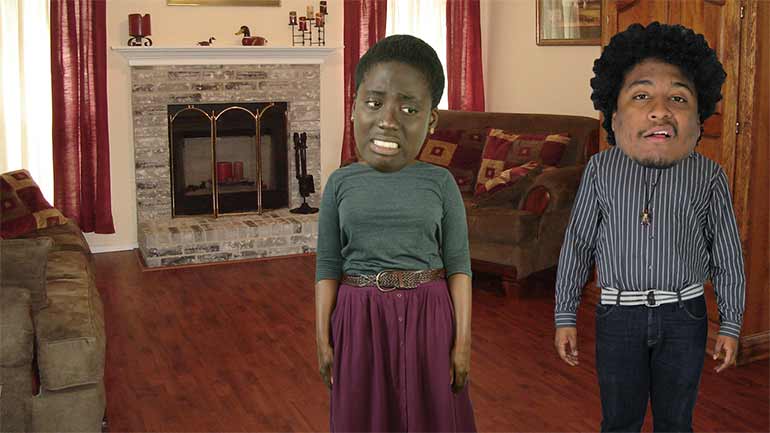ShmoopTube
Where Monty Python meets your 10th grade teacher.
Search Thousands of Shmoop Videos
AP Psychology Videos 135 videos
AP Psychology 2.3 Testing and Individual Differences. Which factor below needs to be considered in the administration and evaluation of the attenti...
AP Psychology 2.4 Testing and Individual Differences. Which of these is an example of studies used in the nature vs. nurture debate of intelligence?
AP Psychology 1.2 Developmental Psychology. How would you respond to someone stating that babies are born without any real sense of the world aroun...
AP Psychology 1.2 Sensation and Perception 29 Views
Share It!
Description:
AP Psychology 1.2 Sensation and Perception. The cells in the back of the eye that only see in black and white are called what?
Transcript
- 00:00
Thank you here's Your shmoop du jour brought to you
- 00:05
by riddles about color For example what's black and white
- 00:08
and red all over zebra in a quentin tarantino film
- 00:14
Right here's our question The cells in the back of
- 00:17
the eye that only see in black and white are
Full Transcript
- 00:20
called what And here a potential answers are going to
- 00:23
run right Well in order to narrow it down let's
- 00:26
take a look at what each part of the eye
- 00:28
does let's start with e the retinal ganglion cells it
- 00:32
looks like a made up phrase from a sci fi
- 00:34
film the return of the retinal ganglion but well it's
- 00:38
not that exciting These cells are responsible for transferring information
- 00:41
from the eye to the brain However since we're talking
- 00:45
about cells that see in some sense of the word
- 00:48
at least this answer doesn't fit it's not really doing
- 00:51
the seeing so much as receiving information from one source
- 00:54
and passing it along to another so in cross out
- 00:56
eat these retinal ganglion cells form the bulk of the
- 00:59
optic nerves along with the glial cells that regulate protect
- 01:03
and support the nerves as they do their information Sending
- 01:07
thing though is out as well It's like i let's
- 01:11
move on to see the bow via well the phobia
- 01:14
is a small pit near the center of the retina
- 01:16
That's responsible for sharp central vision providing us with direct
- 01:19
line of sight used in tasks like reading and driving
- 01:22
Think of it is you're focused vision or in other
- 01:24
words the number one thing you should be thankful for
- 01:27
your ability to reach the top of the scoreboards in
- 01:29
college duty But does it only see in black and
- 01:32
white know why Because this central pitting your eyes made
- 01:36
up of cones cones process color as well as visual
- 01:40
acuity so it looks like both cnn air out which
- 01:43
leaves us with b rods cones and rods are the
- 01:47
two types of cells that cover the eye and initially
- 01:49
received or see the light waves coming in The rods
- 01:53
handle the black and white which helps us see in
- 01:55
the dark so it looks like he's our answer But
- 01:58
don't worry rods Some of the best things only come
- 02:00
in black and white I'm gonna find these guys and
- 02:03
i love lucy marathon to watch b i love shmoop 00:02:07.11 --> [endTime] hey what do you think nbc You listening
Related Videos
AP Psychology 2.2 Social Psychology. Which of the following was an independent variable manipulated in Asch's research?
AP Psychology 1.1 Personality. According to Freud, these three parts of personality are constantly in conflict.
AP Psychology 1.1 Sensation and Perception. The process by which the brain can turn sensory stimuli from the outside world into electrical signals...
AP Psychology 1.1 Social Psychology. Which of the following best describes social psychology?
AP Psychology 1.1 States of Consciousness. Who conducted research on REM sleep deprivations?
